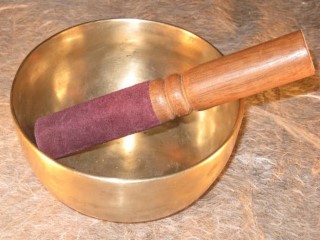Copper is the most abundant metal in antique and even modern singing bowls by far, generally running between 75% and 80%. Copper offers singing bowls many benefits, including being a wonderfully resonant element and a major factor in the sweet tones that emanate from a high-quality bowl. It is also an important factor in singing bowls’ long resonant sustain. So, does copper have healing properties?
Copper is one of the seven sacred metals of antiquity. It is one of the earliest metals to be used by our ancestors and so has a history going back thousands of years. Various healing systems use copper for a variety of spiritual benefits and physical ailments. Copper is both a required nutrient with a RDA (recommended dietary allowance) so alleviating a deficiency can have a beneficial physical effect. On the other hand, copper is a toxin when too much is ingested.
In the Himalayas, one of the things you hear about bronze bowls is that they are “clean”. This cleansing extends beyond the energetic to the physical. I have heard that they are used to purify water and even food. The ancient Egyptians also used copper to sterilize water. Romans and Aztecs used copper to treat burns. Well, it turns out this ancient “folklore” has a solid grounding in modern science. Copper has powerful antimicrobial properties, both bacterial and viral.
Copper in hospital settings
In 2013 researchers at the Charleston VA Medical Center and the Sloan Kettering Cancer Center tested the antimicrobial properties of copper by changing ICU fixtures from steel to copper. They replaced the surfaces most likely to carry harmful germs, even doorknobs. Results were impressive, bacteria was reduced by 97% and hospital-acquired infections dropped by 41%. Here is the pub med link.
Copper and the COVID-19 virus.
A report published March 17, 2020 in the prestigious New England Journal of Medicine showed that aerosols of the Corona virus were shorter lived on copper, only 4 to 8 hours, than on any other surface. It was longest lived on hard plastic and steel surfaces (3 days) while on cardboard it has a one day life.
This does NOT mean, of course, that a singing bowl is a preventative or cure for the virus. What it does mean is out of the box you can be pretty confident your singing bowl has no trace of it.
















